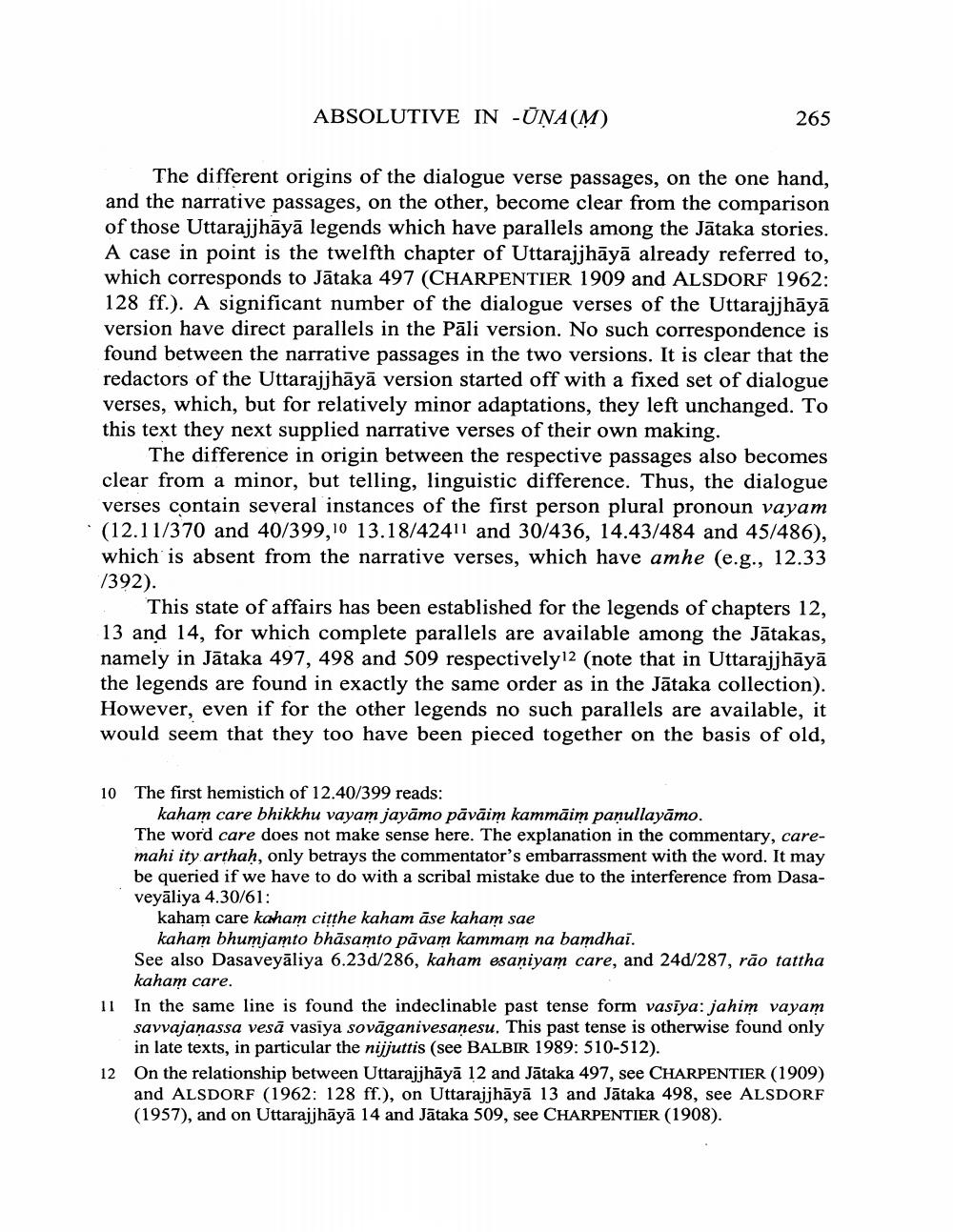Book Title: Distribution Of Absolutive In Una In Ittarajjhaya Author(s): Herman Tieken Publisher: Herman Tieken View full book textPage 5
________________ ABSOLUTIVE IN -ŪŅA(M) 265 The different origins of the dialogue verse passages, on the one hand, and the narrative passages, on the other, become clear from the comparison of those Uttarajjhāyā legends which have parallels among the Jātaka stories. A case in point is the twelfth chapter of Uttarajjhāyā already referred to, which corresponds to Jātaka 497 (CHARPENTIER 1909 and ALSDORF 1962: 128 ff.). A significant number of the dialogue verses of the Uttarajjhāyā version have direct parallels in the Pāli version. No such correspondence is found between the narrative passages in the two versions. It is clear that the redactors of the Uttarajjhāyā version started off with a fixed set of dialogue verses, which, but for relatively minor adaptations, they left unchanged. To this text they next supplied narrative verses of their own making. The difference in origin between the respective passages also becomes clear from a minor, but telling, linguistic difference. Thus, the dialogue verses contain several instances of the first person plural pronoun vayam (12.11/370 and 40/399,10 13.18/42411 and 30/436, 14.43/484 and 45/486), which is absent from the narrative verses, which have amhe (e.g., 12.33 7392). This state of affairs has been established for the legends of chapters 12, 13 and 14, for which complete parallels are available among the Jātakas, namely in Jātaka 497, 498 and 509 respectively12 (note that in Uttarajjhāyā the legends are found in exactly the same order as in the Jātaka collection). However, even if for the other legends no such parallels are available, it would seem that they too have been pieced together on the basis of old, 10 The first hemistich of 12.40/399 reads: kaham care bhikkhu vayam jayāmo pāvāim kammāim paņullayāmo. The word care does not make sense here. The explanation in the commentary, caremahi ity arthaḥ, only betrays the commentator's embarrassment with the word. It may be queried if we have to do with a scribal mistake due to the interference from Dasaveyaliya 4.30/61: kaham care kaham citthe kaham āse kaham sae kaham bhumjamto bhāsamto pāvam kammam na bamdhai. See also Dasaveyāliya 6.23d/286, kaham esaniyam care, and 24d/287, rāo tattha kaham care. 11 In the same line is found the indeclinable past tense form vasiya: jahim vayam savvajanassa vesā vasiya sovāganivesanesu. This past tense is otherwise found only in late texts, in particular the nijjuttis (see BALBIR 1989: 510-512). 12 On the relationship between Uttarajjhāyā 12 and Jātaka 497, see CHARPENTIER (1909) and ALSDORF (1962: 128 ff.), on Uttarajjhāyā 13 and Jātaka 498, see ALSDORF (1957), and on Uttarajjhāyā 14 and Jātaka 509, see CHARPENTIER (1908).Page Navigation
1 ... 3 4 5 6 7 8 9 10 11 12 13 14 15 16 17 18 19 20 21 22 23 24 25 26
